This review is late.
I mean, excessively late. Intervision’s DVD of MURDERLUST was released in January, over two months ago, and I’ve had the review copy of it since that time. I apologize profusely to everyone involved – the merciful editorial team at DAILY GRINDHOUSE, the hard-working staff at INTERVISION, and to you, my loyal, dedicated audience who has eagerly waited for my words about this release for what must have seemed like an eternity. I do hope you will forgive me, but I plead special circumstances. Special PROJECT NIGHTMARE-related circumstances.
These circumstances have nothing to do with the main feature on the disc. I like MURDERLUST, and was probably one of the half-dozen people very much looking forward to the DVD release as soon as it was announced. Directed by Donald Marcus Jones, 1985’s MURDERLUST was, for years, confused with the work of fellow genre filmmaker Donald Jones, the director of notable genre works like THE LOVE BUTCHER and THE FOREST. Both Donald Jones made sporadic films in various genres in the ‘70s and ‘80s, churning out low-budget films with negligible cult followings, with juuuuust enough information about the two of them to lead to a joint IMDb entry that seems to have been thankfully remedied. MURDERLUST’s Donald Jones is the man behind DEADLY SUNDAY and HOUSEWIFE FROM HELL, not to be confused with the Donald Jones behind SWEATER GIRLS and MOLLY AND THE GHOST.

The fantastically-titled MURDERLUST was first issued on VHS in 1987 by Prism Home Video with cover art that, while selling the sleazy premise of the film, wasn’t exactly that distinguishable among the countless sleazy covers that were cropping up in video stores at the time. Making its home video debut at a time when the more sordid, wild-west era of VHS was beginning to wind down, MURDERLUST fell between the cracks of psychotronica, its reputation wasn’t helped by the fact that the release was heavily cut, chopping a 97-minute film down to just under 87. As a result, even the few folks that were interested enough by the image of a woman being strangled on the cover would have been potentially disappointed by the slapdash nature of the editing, which presents a film that skirts around the edge of something genuinely grim and disturbing without actually diving in.
If you were quick on the draw, you could have spotted the uncut version making its out-of-nowhere debut on Jones’s YouTube channel last year, but up until then, the full power of MURDERLUST was unseen by human eyes. While the ten-minute difference doesn’t turn it into a masterpiece, it does deliver more on the grimy ideas that the plot and the VHS box art promise.
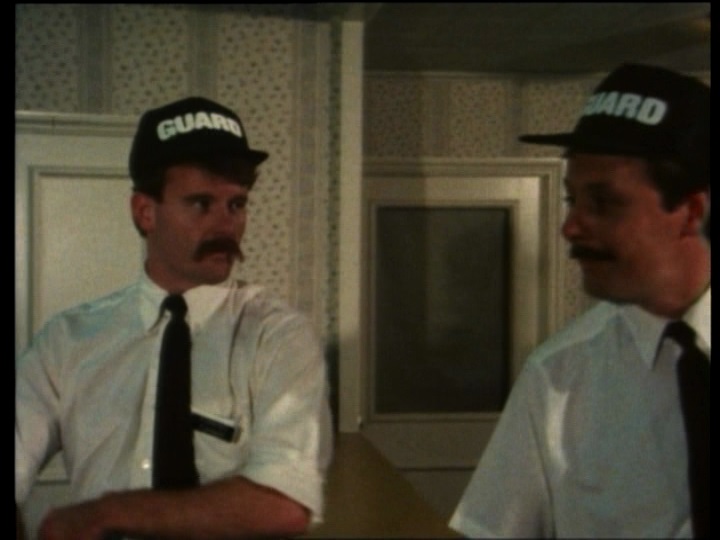
MURDERLUST is the story of Steve (Eli Rich), a Sunday school teacher and security guard who leads a relatively routine existence during his working hours, albeit one rife with everyday problems like not being particularly great at either job and being unable to pay his rent on time. On his off-hours, however, he’s busy picking up prostitutes and other random women and murdering them either in their apartments on in his van. He drops off the bodies in the desert, but his stash of corpses is eventually found, leading to the media searching for “The Mojave Murderer.”
Steve begins having an actual romance with Cheryl, a young woman whose mother is part of the church that he attends. Their romance hits a bumpy point, however, when things start to get physical, even though Steve’s bad luck with jobs seems to be turning due to the church’s potential opening of a crisis center. Meanwhile, he keeps killing women, though what he’s doing with the bodies at this point is a bit of a question mark.
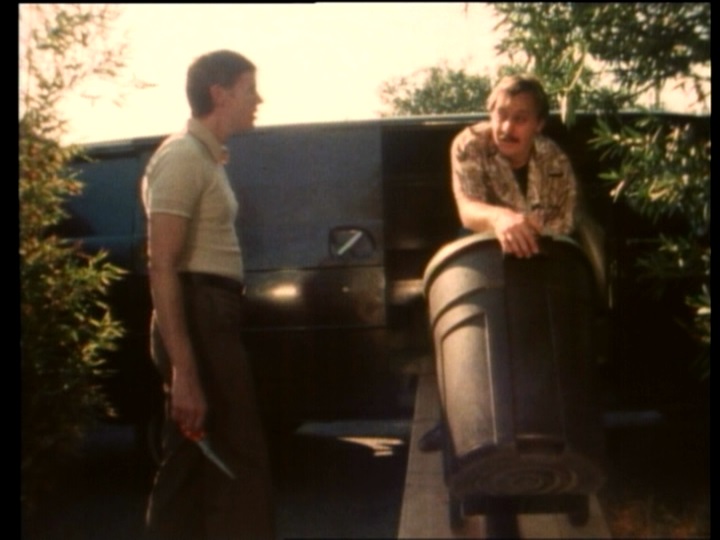
Shot in 1985, MURDERLUST treads on similar turf to HENRY: PORTRAIT OF A SERIAL KILLER, telling the serial killer story almost entirely from the point of view of the killer himself. While not nearly as committed to its soul-crushing artistry as John McNaughton’s classic, the films are similar in the lead performances – Rich’s portrayal of Steve is fascinating enough to compensate for some of the film’s more muddied motivations. (We start the film assuming Steve is punishing prostitutes for their sins, but later exploits seem to contradict this motive, as some victims are punished simply for being in Steve’s line of sight at the time.) It’s enough to even forgive some absurd moments, like a scene in which he has his cousin Neil unknowingly assist him with loading a trash can containing one of his victims into his van.
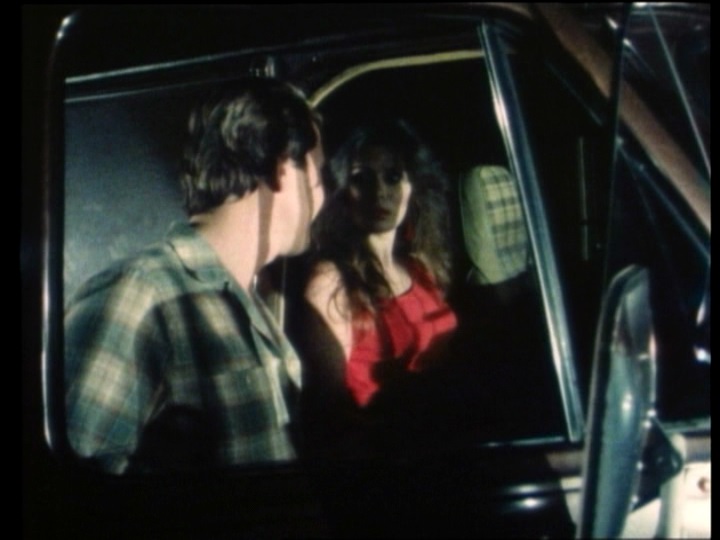
From the opening sequence, in which Steve picks up a surly prostitute who admits to having a kid (mentioning it as “a kid is a kid, they’re all pains in the butt”) and then murders her after she calls him impotent, MURDERLUST sets its tone at “grim” and never lets up. It’s also undeniably ambitious, as watching Steve struggle to maintain three distinct lives – the saintly church teacher, a surly, often-broke security guard who argues with customers and co-workers and a potentially impotent murderer of women – makes for a compelling film that belies obvious budget limitations. The three lives begin to blend together as the film progresses, giving MURDERLUST a depth that other, similarly lurid films, lack. Shot on 16mm in locations that give a very distinct small-down feel, MURDERLUST gives off a vibe that could have easily come from a film ten years earlier, the type of mean-spirited-yet-fascinating experience that served as a hallmark of the drive-in era.

For the most part, the changes in the running time between the original VHS cut and this restored version are limited to longer attack sequences that, while not gory, are violent and unpleasant to watch. Virtually all of the murder sequences are prolonged, resulting in Steve’s tale coming off as much more sadistic and grim than the version known for decades. In addition, the sequence in which Steve forces a woman to perform fellatio (as we learn in the commentary, played by the director’s daughter!) adds a bit of Steve reciting Psalm 23:4, showing overlap between two of his worlds.

Beyond the harsher murder sequences, the biggest change in the complete cut of MURDERLUST to the VHS version is in a subplot in which Steve is accused of sexually molesting Debbie, one of his students. The uncut version reinstates a scene in which Steve confronts Debbie after she draws a pornographic picture, reframing the later accusation scene, in which Debbie’s parents choose to disbelieve their daughter and defend Steve, so the accusation doesn’t just come out of nowhere. In the VHS cut, the scene plays as a “he said, she said” with no definitive answer to whether or not Debbie is lying, but the complete version, where Steve calls her a “future whore,” adds some much-needed context to a subplot that pays off later in the film.
The DVD release also contains a trailer and a commentary track with writer/producer James C. Lane – oddly, Donald M. Jones’s absence isn’t explained. It’s still a nifty track, well worth a listen for fans of ‘80s regional horror curious as to how a film like this came together.
So, I like MURDERLUST. I get MURDERLUST. MURDERLUST was never the problem.
PROJECT: NIGHTMARE, the “bonus” feature on the DVD set, also directed by Jones, was the problem.
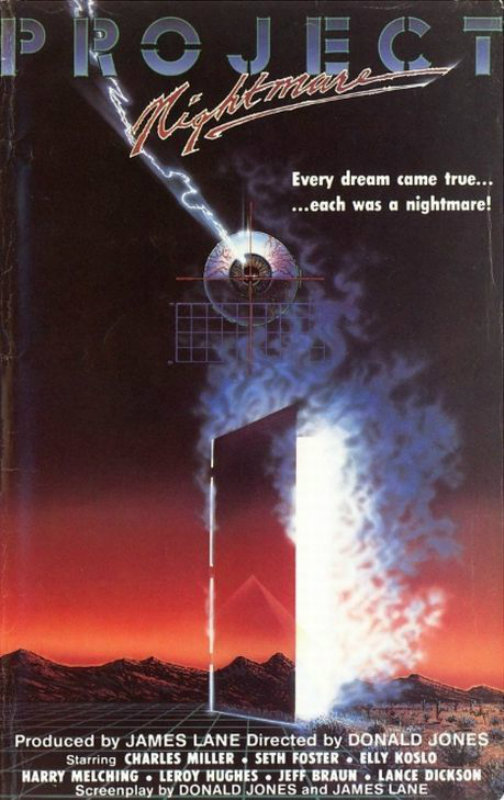
I came of age in the midst of the VHS boom. I was 13 in 1987, and I had parents that, thankfully, were willing to just set up the household card at a local video store, put me on it with instructions that it was fine for me to rent whatever I want, and leave me to it. (This may have been due to permissiveness and faith that I had enough confidence in my own tastes or due to exhaustion with having to be with me every time I wanted to rent a movie, but is likely a combination of the two.) As a result, I got to know the video stores that I could get to via walking or bus obscenely well.

This was before Blockbuster came into town, so the local video store of note was a place called Castle Video. (Their logo was a castle.) Castle Video had an amazing horror section – a full wall of titles promising death, depravity and sleaze in a million different ways. Big boxes lined the bottom rows, daring me to look past the generic, well-known FRIDAY THE 13THs and FRIGHT NIGHTs and delve into deep, unknown trenches of I DISMEMBER MAMA and POOR WHITE TRASH II. There were multiple copies of POOR WHITE TRASH II, just to entice me further. (Though, curiously, no POOR WHITE TRASH.) My paltry Psychotronic Encyclopedia of Film and random issues of Fangoria were no match for the awesome spectacle of Castle Video’s wall of potentially deranged oddities that I couldn’t find in any easily available reference book.
Sounds great, right? I can see some of our younger readers salivating at the idea of a whole store full of grimy, sordid VHS artwork hiding newfound cinematic treasures.
Well.
I didn’t know it then, of course, but the VHS boom allowed for a lot of duplicity when it came to matching the box art with the films they represented. The need for product and the huge influx of video customers also meant that distributors could basically get away with throwing anything onto a tape, wrapping it in some good cover art and selling it to retailers. Anything. Especially movies that were over a decade old and never really played anywhere.
For the most part, I rarely ventured out of my comfort zones. I’d get the movies I read about. I’d get the new releases when they came in, because they had nice, shiny new boxes. I stayed away from the big boxes. I was intimidated by the unknown – if I didn’t know what I was getting into, and I thought it was going to be too much for my fragile teenage brain, I’d pass. Only for today, mind you. I’d gear up the nerve to bring the POOR WHITE TRASH II box up to the counter one of these days.
One of these films that I constantly almost rented was SLASHED DREAMS. The clamshell box art was lurid, but not insanely so, and the back label didn’t have any actual picture of the film within. But the movie was called SLASHED DREAMS and Robert Englund was listed among the cast. Surely, I thought, this must be okay! I love the ELM STREET movies, and this is about dreams being slashed with Robert Englund! This must be good!
Eventually, I took the plunge, handing over the $3 from my paper route to bring SLASHED DREAMS home. I was so proud of myself, finally reaching into the abyss of the unknown to pull out what I was positive would be an unseen masterpiece. “How does everyone not know about this movie?” I remember wondering. Surely I’d come up with a winner!
When the credits begin to roll, however, my youthful spirit started to melt away. SLASHED DREAMS was the retitling of a barely-released 1975 drama called SUNBURST, in which Englund plays a minor role. It’s not just dull, it’s soul-crushingly dull. There was no unseen masterpiece – I’d reached into the abyss of the unknown and grabbed a pile of donkey shit.
I was not, however, to be deterred. I’d taken a chance, and it hadn’t paid off, but that must have been due to my reliance on Robert Englund’s name. Surely not all of these questionable boxes could yield such boring results! Surely the other must, er, at least contain horror movies! Ones that were made in this decade!
So I went back to the store and picked out PROJECT: NIGHTMARE.
Now, mind you, PROJECT: NIGHTMARE’s VHS box is almost identical in format for SLASHED DREAMS, so I’m unsure why I expected different results. Both were released by Academy Entertainment in 1986, both have vague, painted artwork on the front and no shots of the film itself on the back. Both utilize the blandest font that mankind has ever known.
So, really, it’s my own fault that Academy Entertainment got me again. Because PROJECT: NIGHTMARE, to my 13-year-old eyes, was a giant rip-off, a coma-inducing flatline of a movie clearly made over a decade earlier, involving two guys that wander around a forest or something and then nothing happens. I don’t think I watched the whole thing. I was so disgusted, so disillusioned in the video industry and the con artists that clearly ran it, that I made sure to find some reference to anything I rented before checking out at the video store. This meant making long lists in tiny notebooks, cross-referencing movie books at the library, and generally becoming that weird looking guy who’s looking at his notes while he picks out what to spend three dollars on.
Screw you, Academy Entertainment. Screw you, PROJECT: NIGHTMARE. You took my innocence.
But I’m a professional1. So when the DVD of MURDERLUST arrived to review, I did my duty on the first film, and settled in to watch PROJECT: NIGHTMARE. I would not let painful memories affect me. I would dive in as though I’d never heard of the film before, giving it my full attention.
Ten minutes later, I was asleep.
PROJECT: NIGHTMARE had the same coma-inducing powers on me at 42 that it had had at 13. There was something deeply ingrained in the relationship between the film and myself, something that couldn’t be overcome even by three decades of separation. Or maybe I’d just started watching it too late. In any case, I held off, knowing I couldn’t complete the review until I fully embraced the NIGHTMARE.
The disc’s release came and went, and several of my friends had picked it up. Now, these friends had no prior history with PROJECT: NIGHTMARE, and while they seemed to like MURDERLUST just fine, they singled out NIGHTMARE as the real prize. “It’s a trippy gem!” they claimed, “I loved it and have no idea why it isn’t much better well-known!” There were reports of watching it multiple times. Heck, even the negative reviews on Letterboxd seemed to admire it for its… something.
So last week, I finally gave in. I popped the disc back into the player and clicked “Play” on PROJECT: NIGHTMARE.
And I loved it.
The thing is, if you go into PROJECT: NIGHTMARE as a movie, you’re going to hate it, and I’d always went in expecting some sort of traditional entertainment. But PROJECT: NIGHTMARE isn’t a movie. It’s a visual tone poem with some plot attached to it so it makes some coherent sense. It’s a bizarre future parable entirely contained within a dream state in which the dialogue feels deliberately off and blunted and the audience is just as confused as the characters within it.
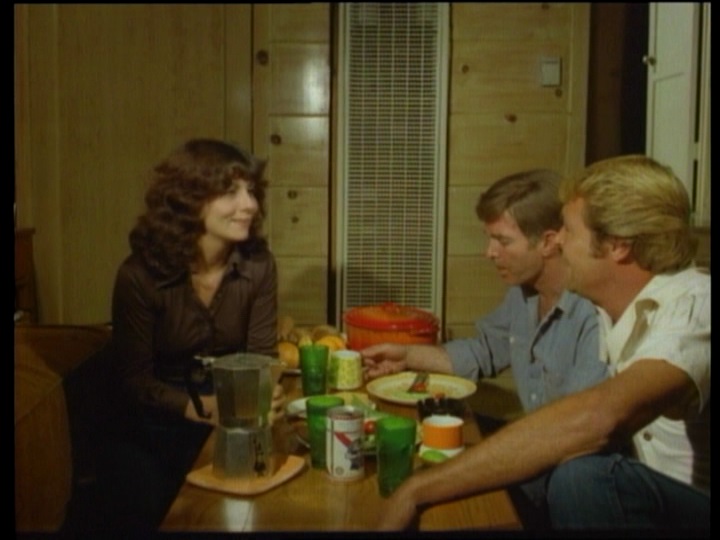
In order to explain the plot, I’m hesitant to say anything beyond “Two campers (Charles Miller and Seth Foster) wake up on a strange place. Weird stuff happens. It all kind of makes sense eventually, in that it’s not supposed to make sense. Which makes sense.” The closest cinematic connection I can think of is like a cross between LAST YEAR AT MARIENAD and BEYOND THE BLACK RAINBOW, made on a ten dollar budget in rural California somewhere.
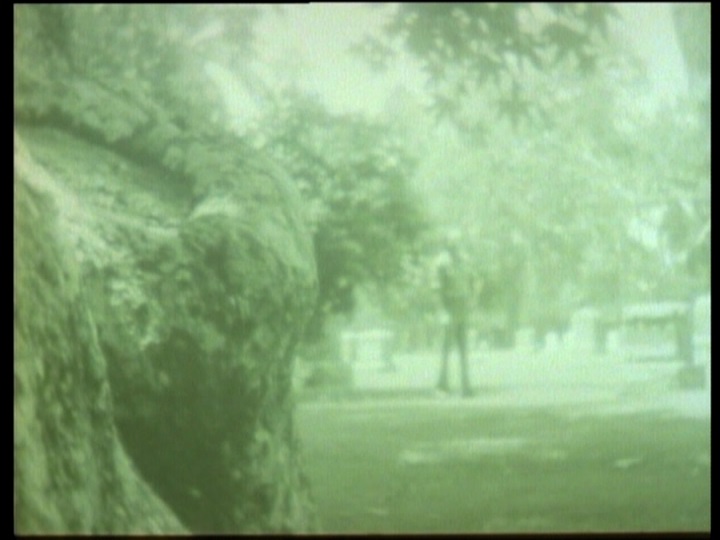
If you’re not expecting this, however, or you’re not really willing or in the mood to deal with the post-sync sound, slow-burn (and I do mean sloooooow-burn) trippiness or long scenes of people walking punctuated by muffled dialogue that becomes almost hypnotic, you will hate PROJECT:NIGHTMARE. (You’ll hate it even more if you’re 13 and expecting some mind-blowing horror movie made in the 1980s – the film was made in 1979.) You will hate it even though it is so comforting in its weirdness, so familiar in its alienness, the colors so simultaneously vivid and muted, that it will likely lull you to sleep on multiple occasions.

The key thing to remember going in to NIGHTMARE is that even if it does serve as a cinematic sedative, the movie is really just doing its job. The computer noises and effects aren’t necessarily there to entertain, and dialogue isn’t really there to inform, the pacing isn’t languid to keep you interested – on the contrary, all of these things are deliberately made to put your mind into a half-sleep state, so the whole film effects the viewer in the same way it does its characters. It’s all a bizarre dream state, and you’re not a passive observer – you’re right in there, like the ‘70s regional genre film equivalent of the E.T. ride at Universal Studios.
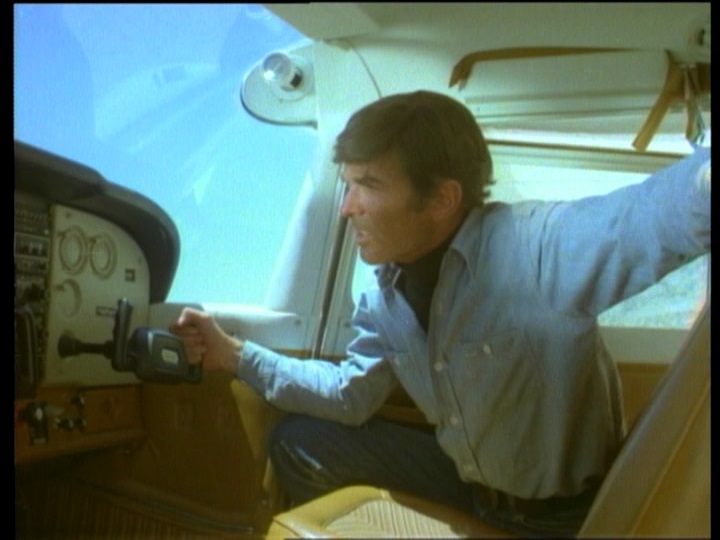
The running time attributed to the film by clock on my DVD player shows that it’s allegedly 74 minutes long, but I swear that it actually exists in a matter of a few seconds or several weeks, depending on your mindset when you go in. The disc also includes a commentary track by writer/producer Lane, who talks about the film’s inception, though I honestly think the end results of the film’s truly compelling nature were achieved by both intent and situation – a big-budget version of the same story wouldn’t have been nearly as effective, as the film’s muffled tone and low-rent effects are what gives it the comforting charm that it has. (I’d point out that it has NIGHTMARE right in the title, just to suggest its dream-like qualities, but it was shot under the name TOUCHSTONE and only got retitled for the video release. This release restores the original title.) It’s the sort of film that you’ll either embrace and enjoy or completely despise, like being in a wood-paneled Commodore PET testing station while under an oxycontin haze.

Is this a recommendation to go out and pick up Intervision’s MURDERLUST DVD? Let’s just say that if you’ve read this far, you’re probably fine with narrative structure throwing you a curveball, and you should probably give the disc a try. MURDERLUST is certainly worth a look, even if it doesn’t quite all fit together, but PROJECT: NIGHTMARE is a film that should be seen, if only as a Rorschach test for how you feel towards its peculiar vision.
1 – I am not a professional.
- JIM WYNORSKI RETURNS WITH THE CREATURE FEATURE ‘GILA’ - May 1, 2014
Tags: dvd, Film Reviews, Horror, Intervision, The 1980s

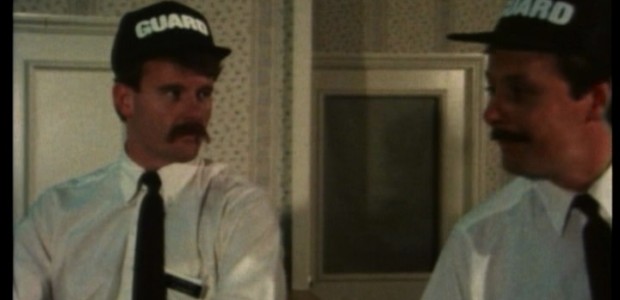

No Comments